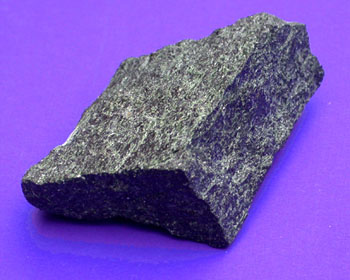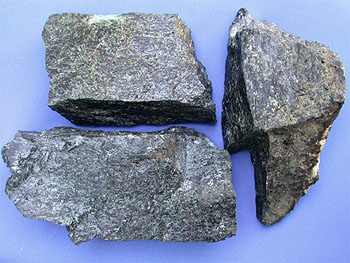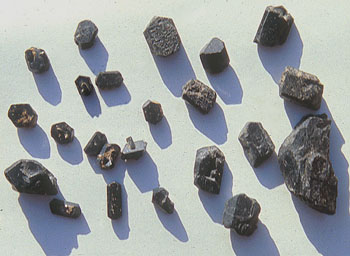| Augite is very dark green to black in color. The diagnostic feature of any pyroxene is two cleavages that intersect at 89° or 91°. Unlike the feldspars or hornblende, pyroxenes show mediocre cleavages that are hard to spot.
Augite is most easily confused with hornblende. Hornblende has highly reflective cleavages whereas augite cleavages are dull. Hornblende tends to form elongate rectangular crystals whereas augite crystals tend to be blocky. Finally, if you can find two intersecting cleavage planes, hornblende cleavages always intersect at ~60° or 120° whereas augite cleavages always intersect at about 90°.
|



